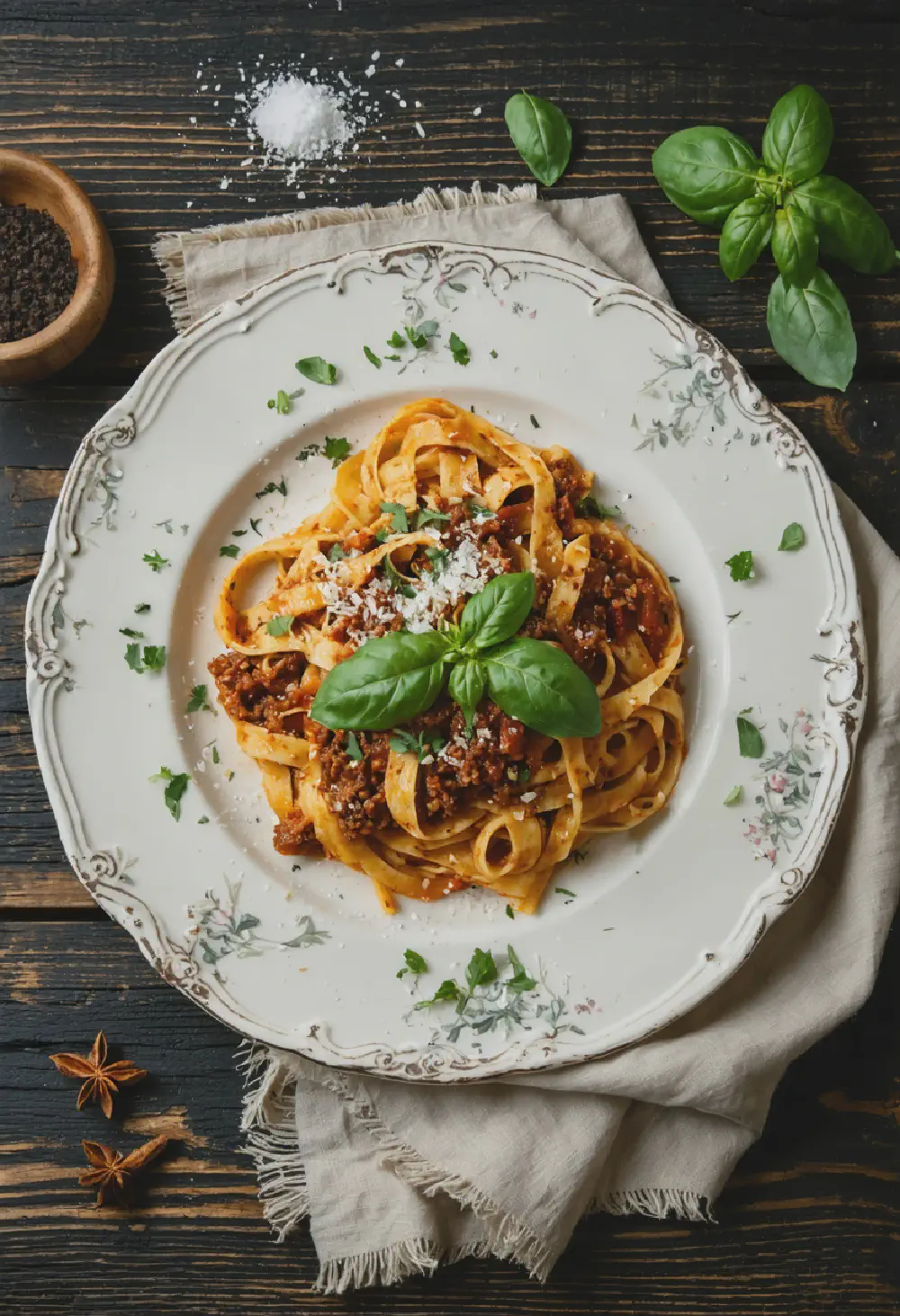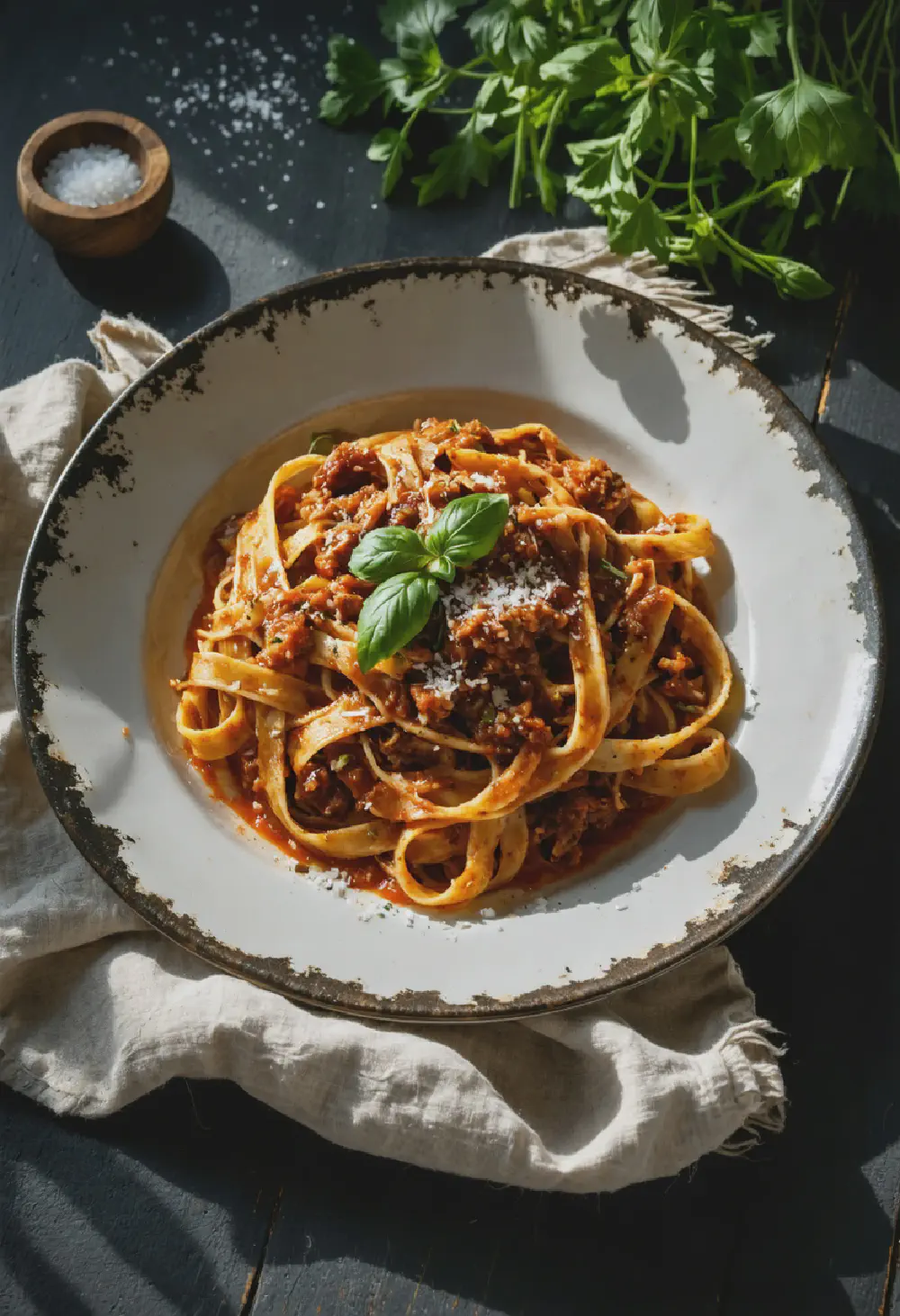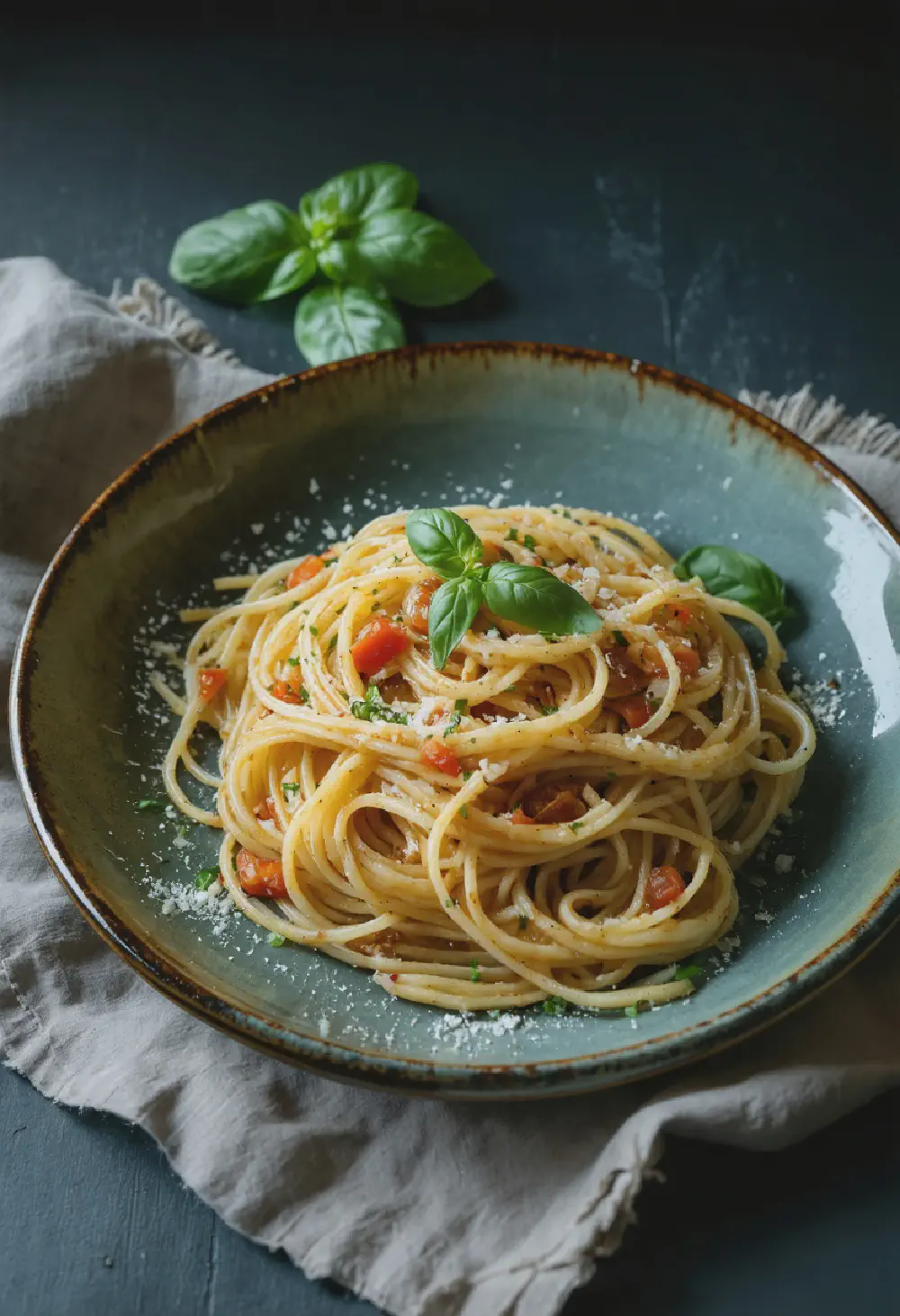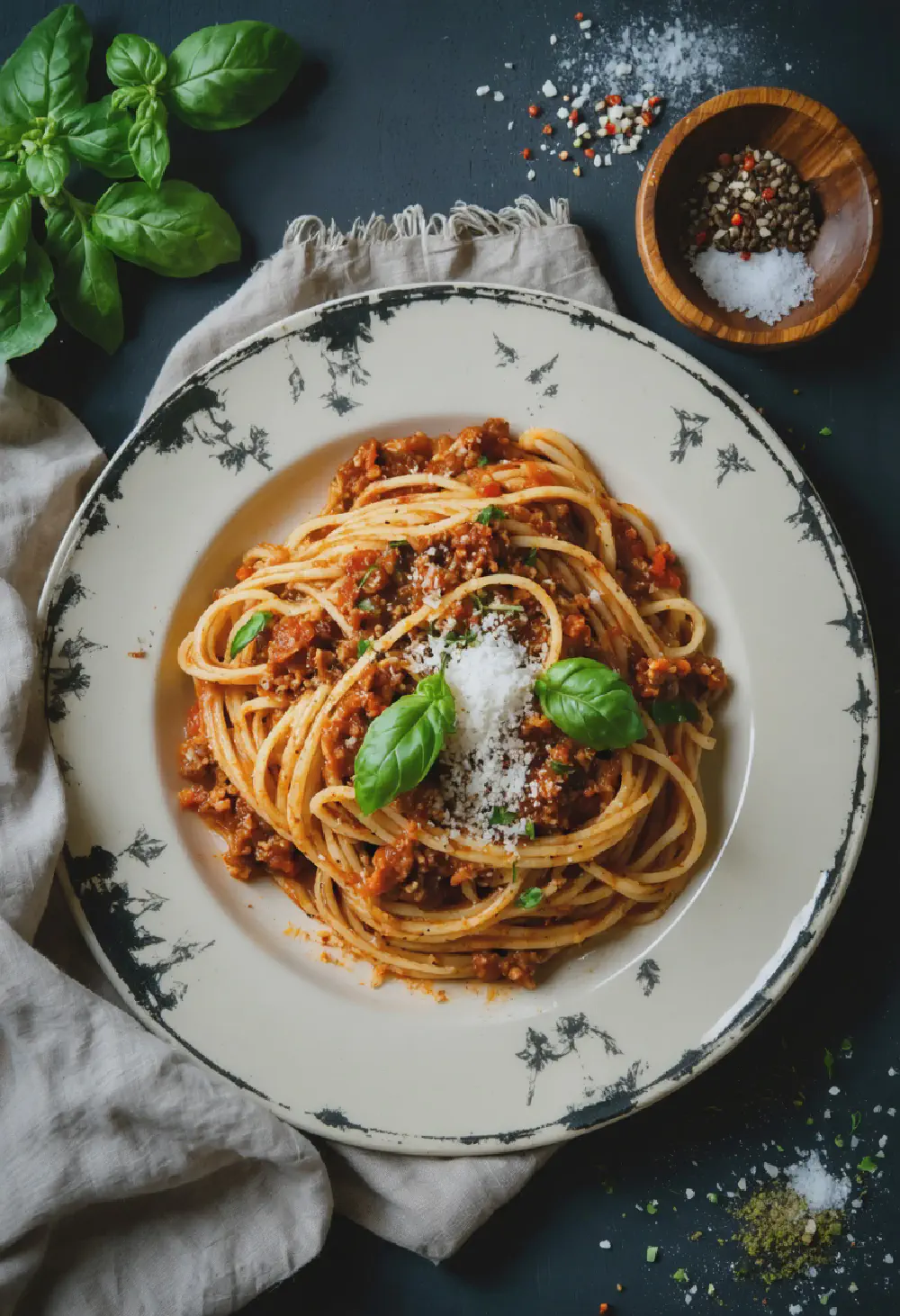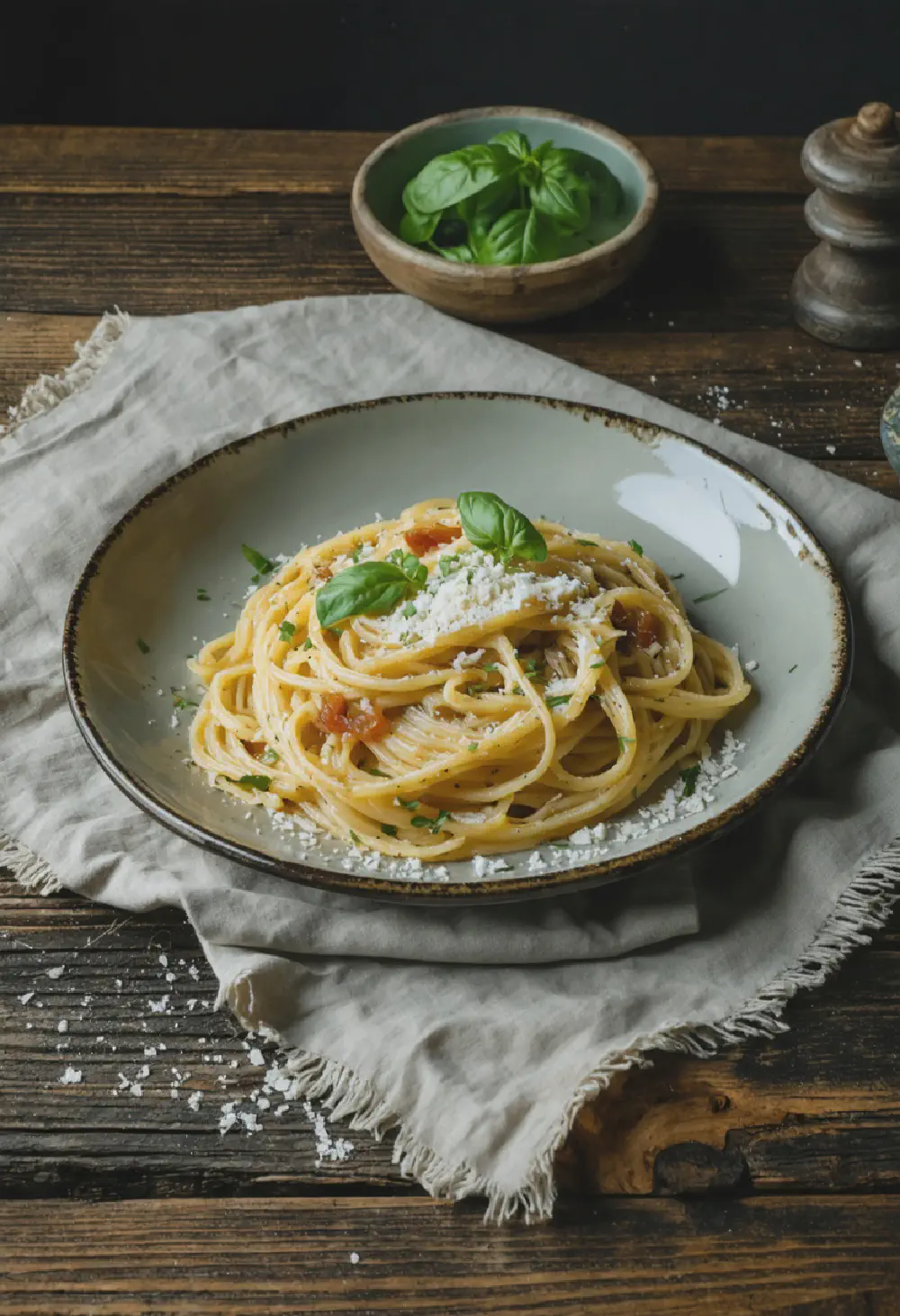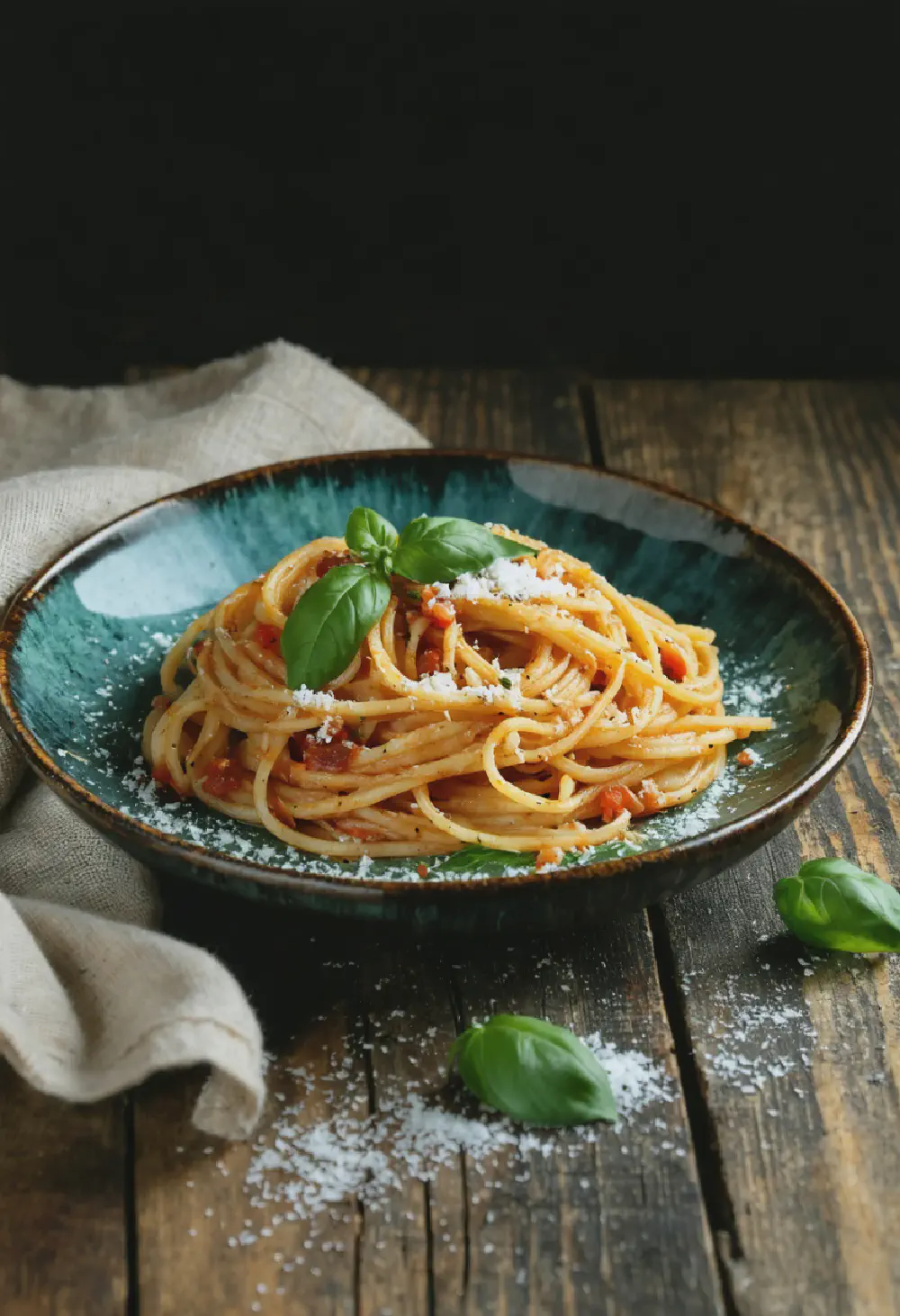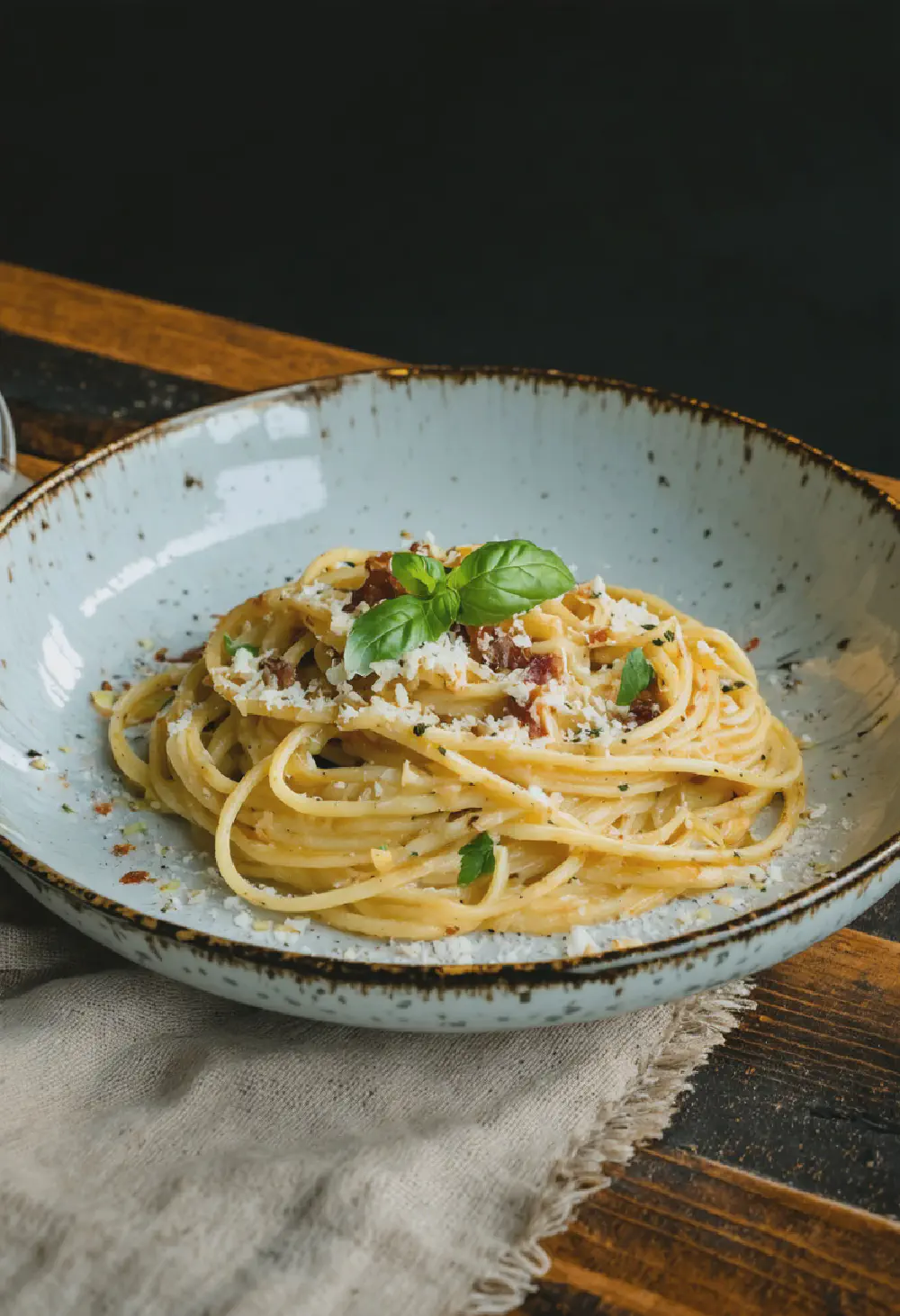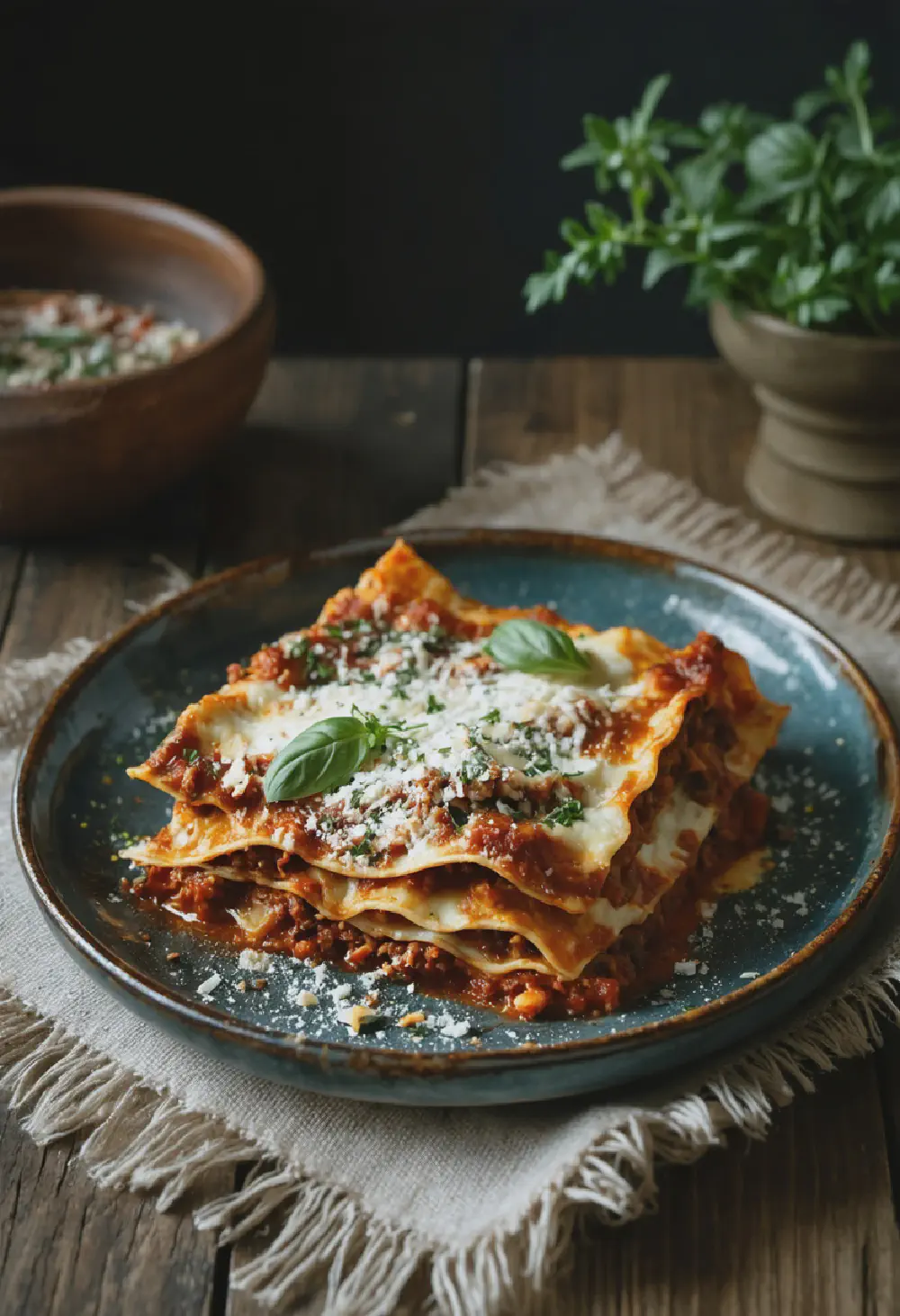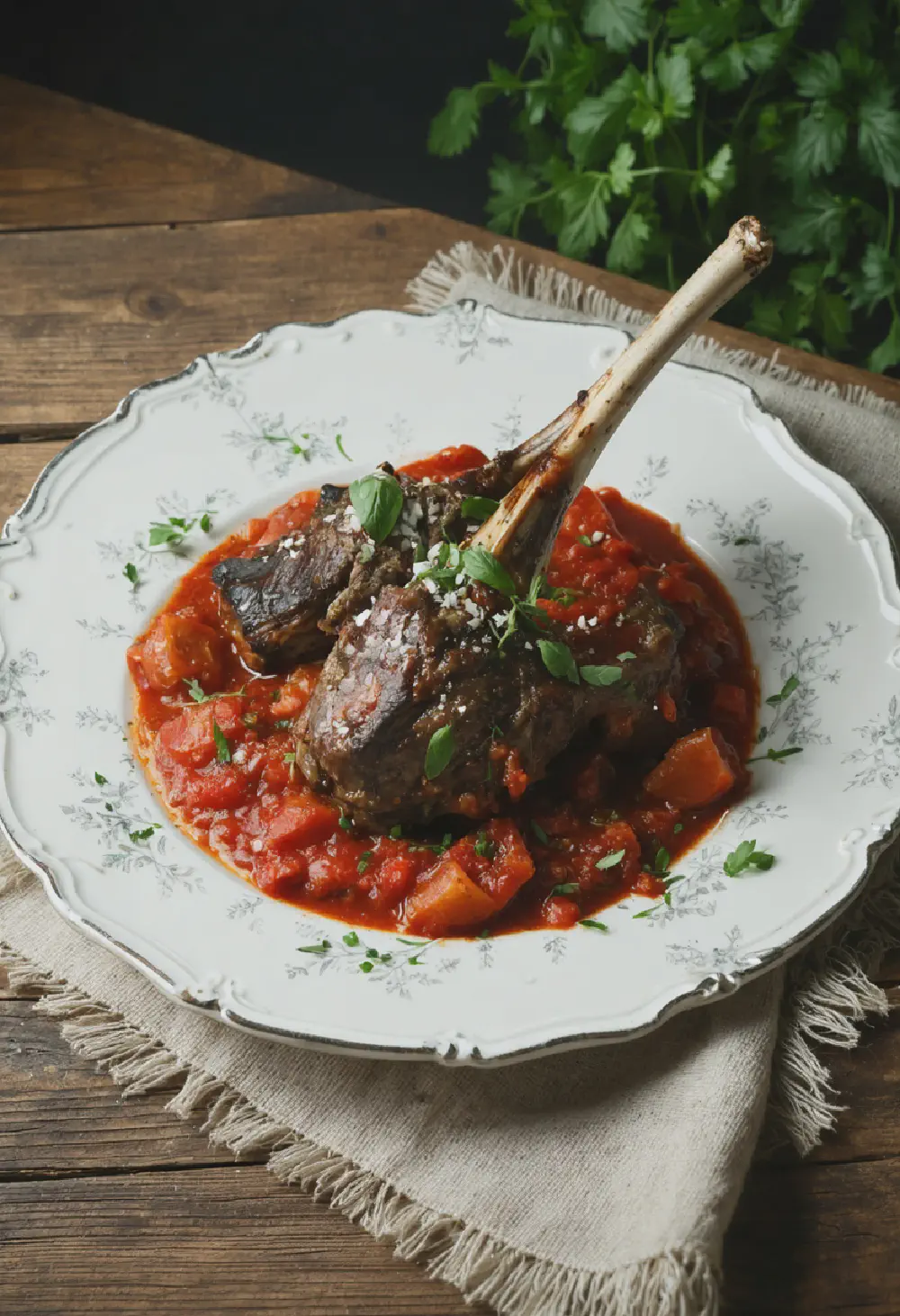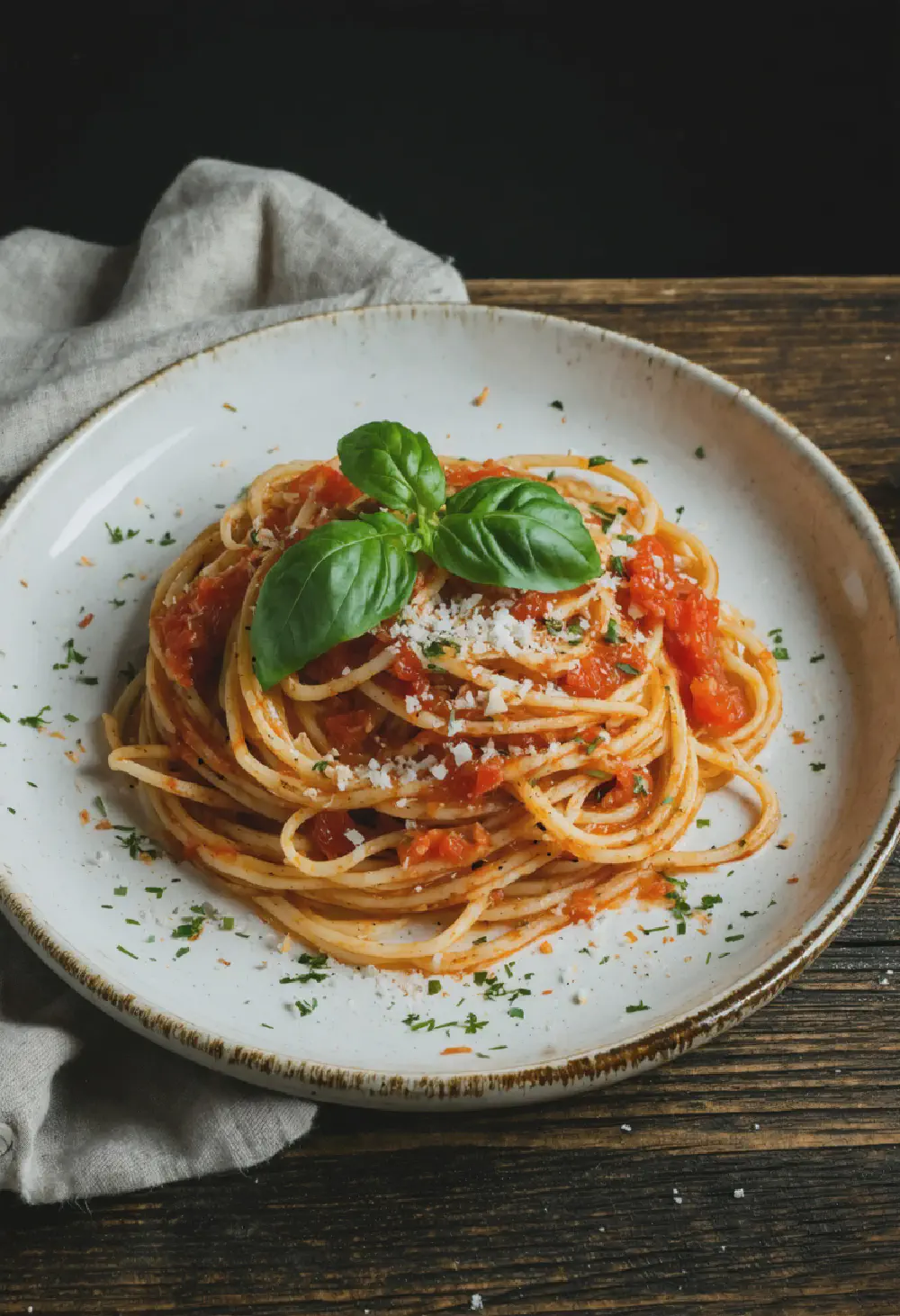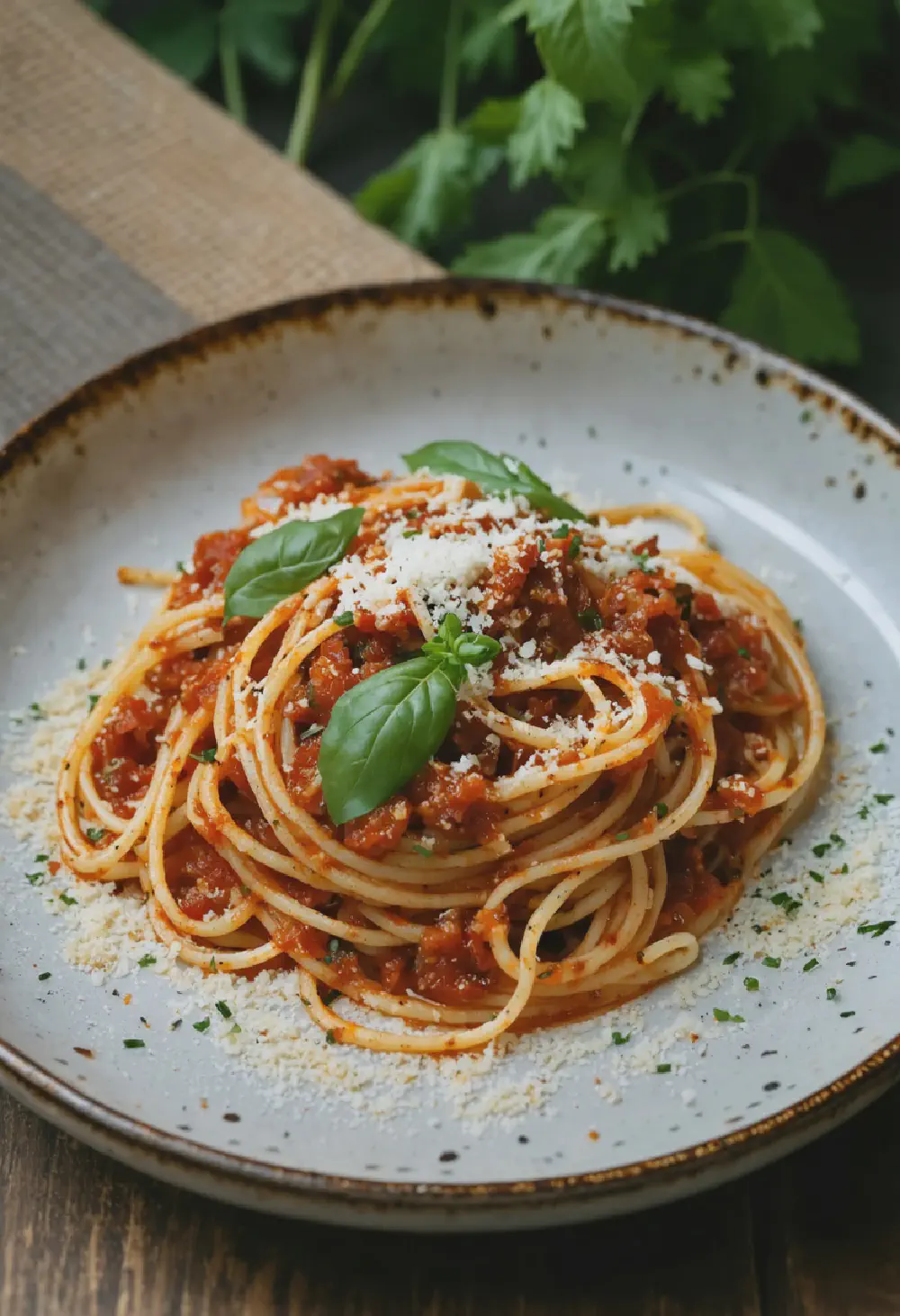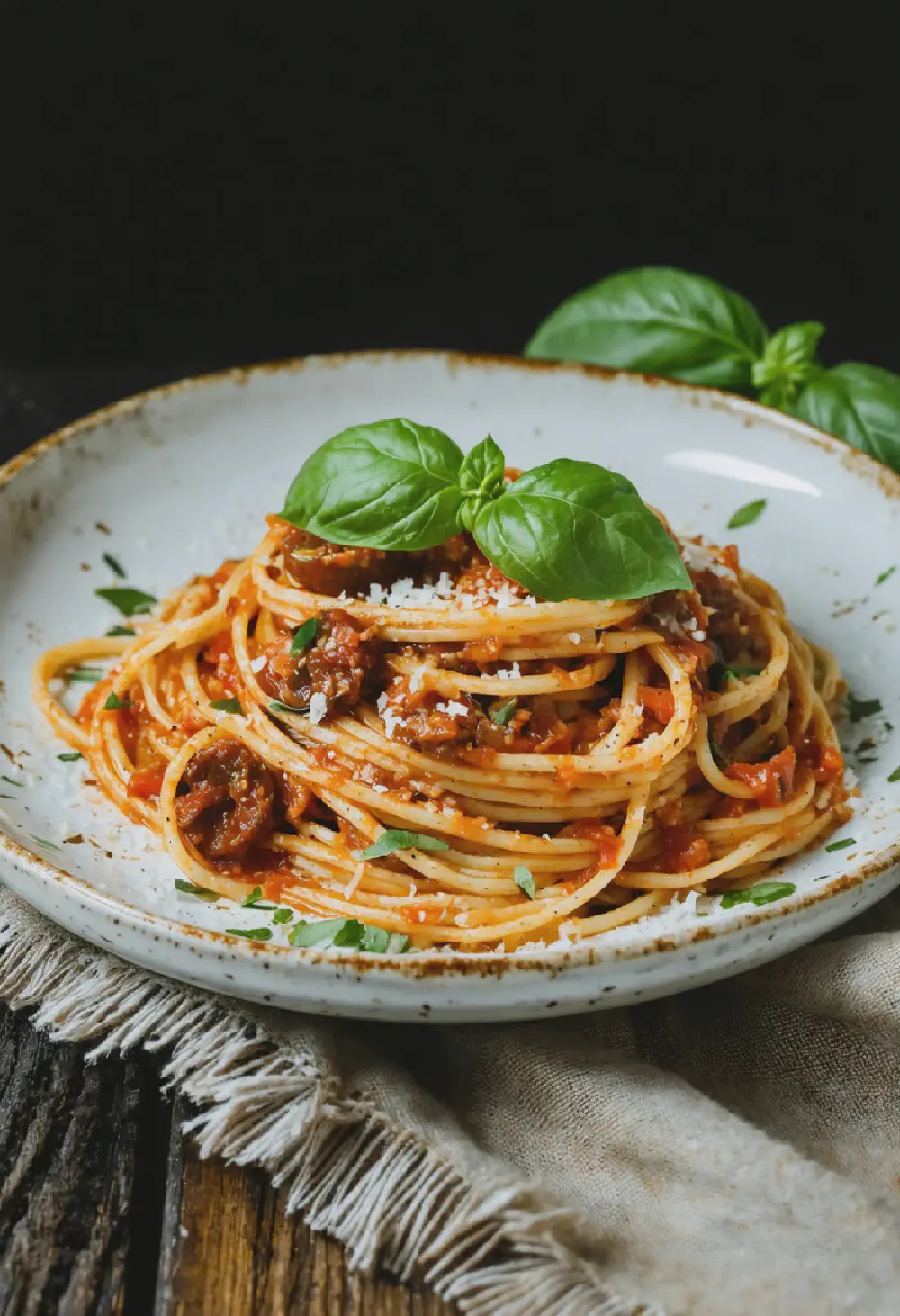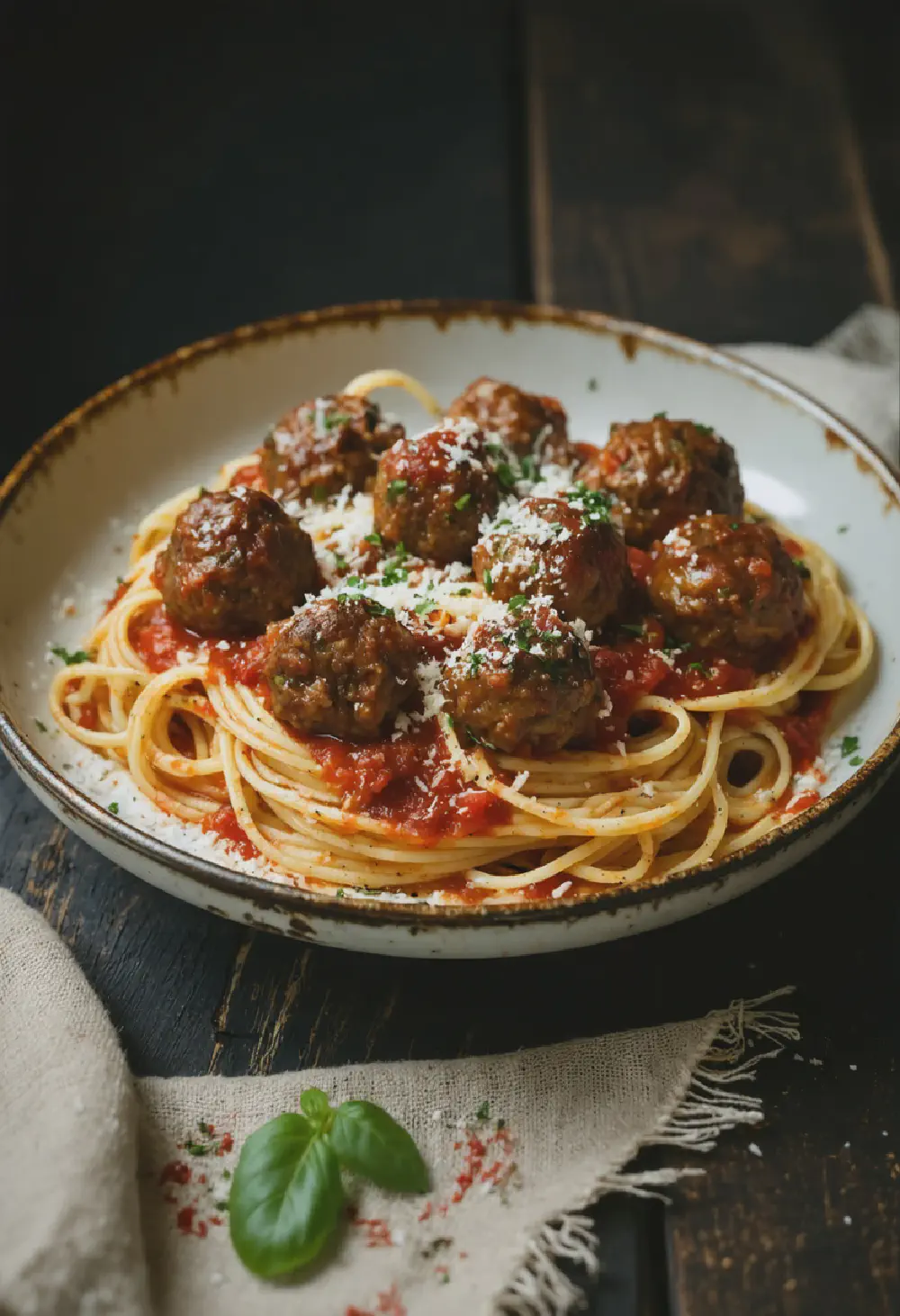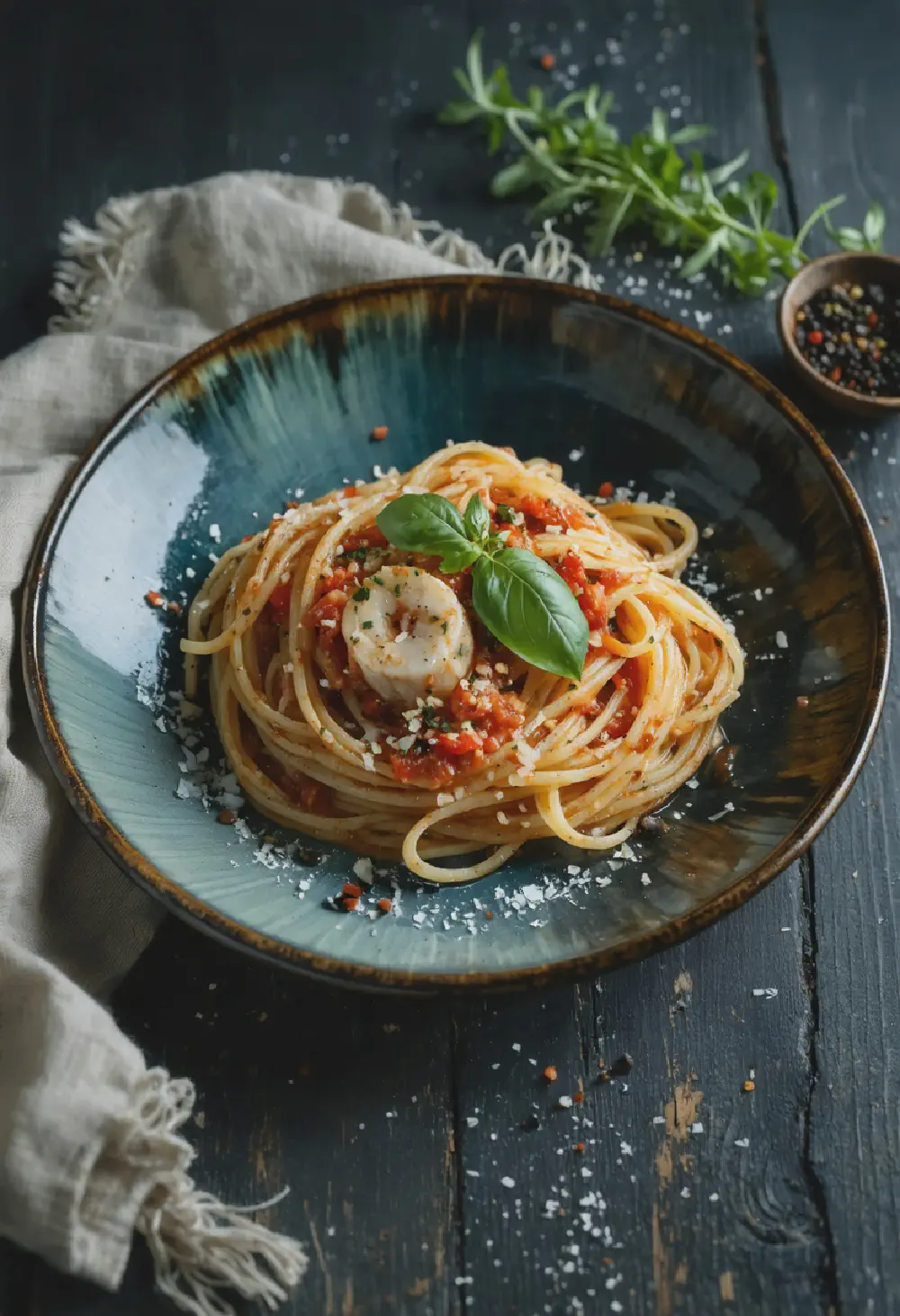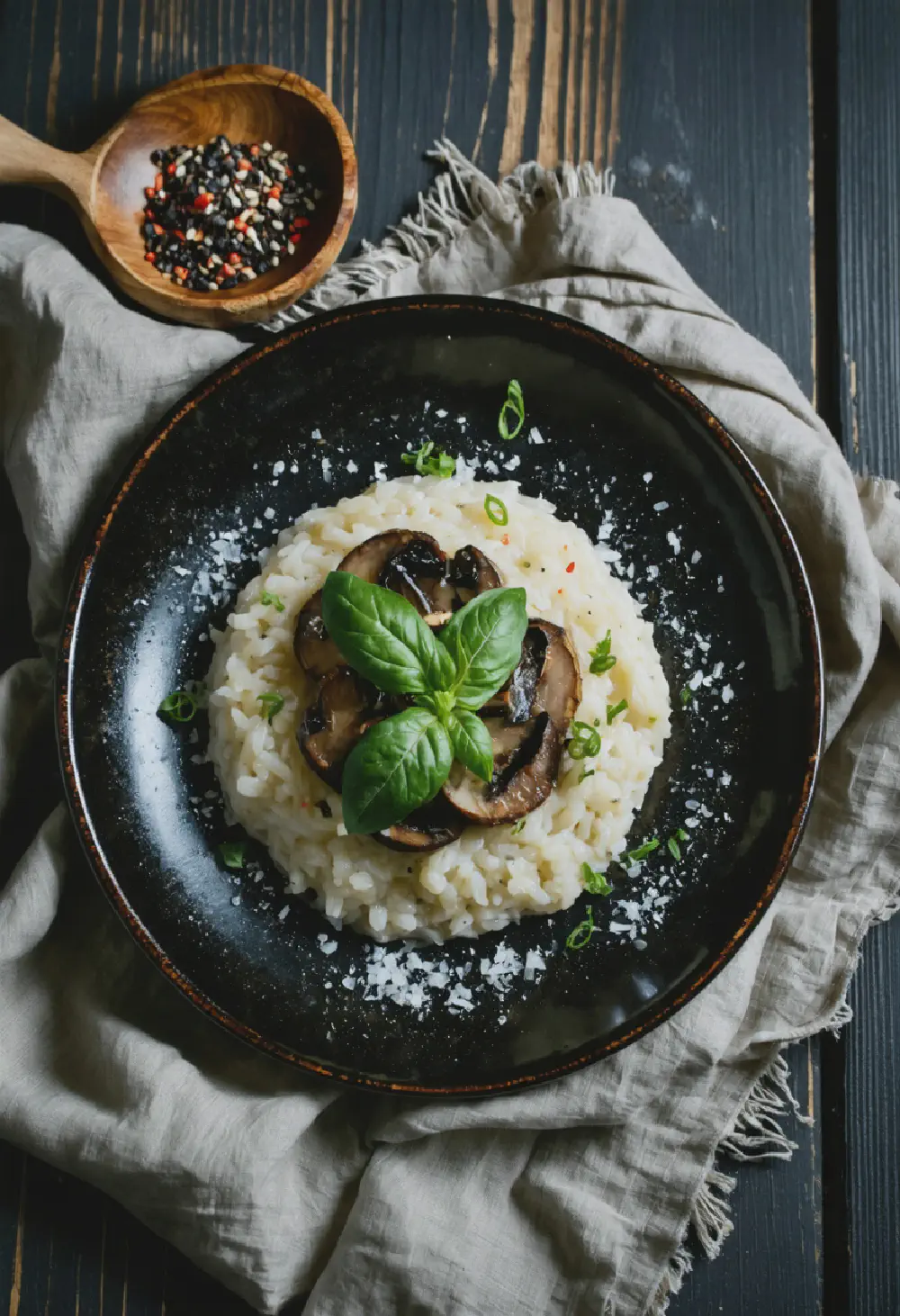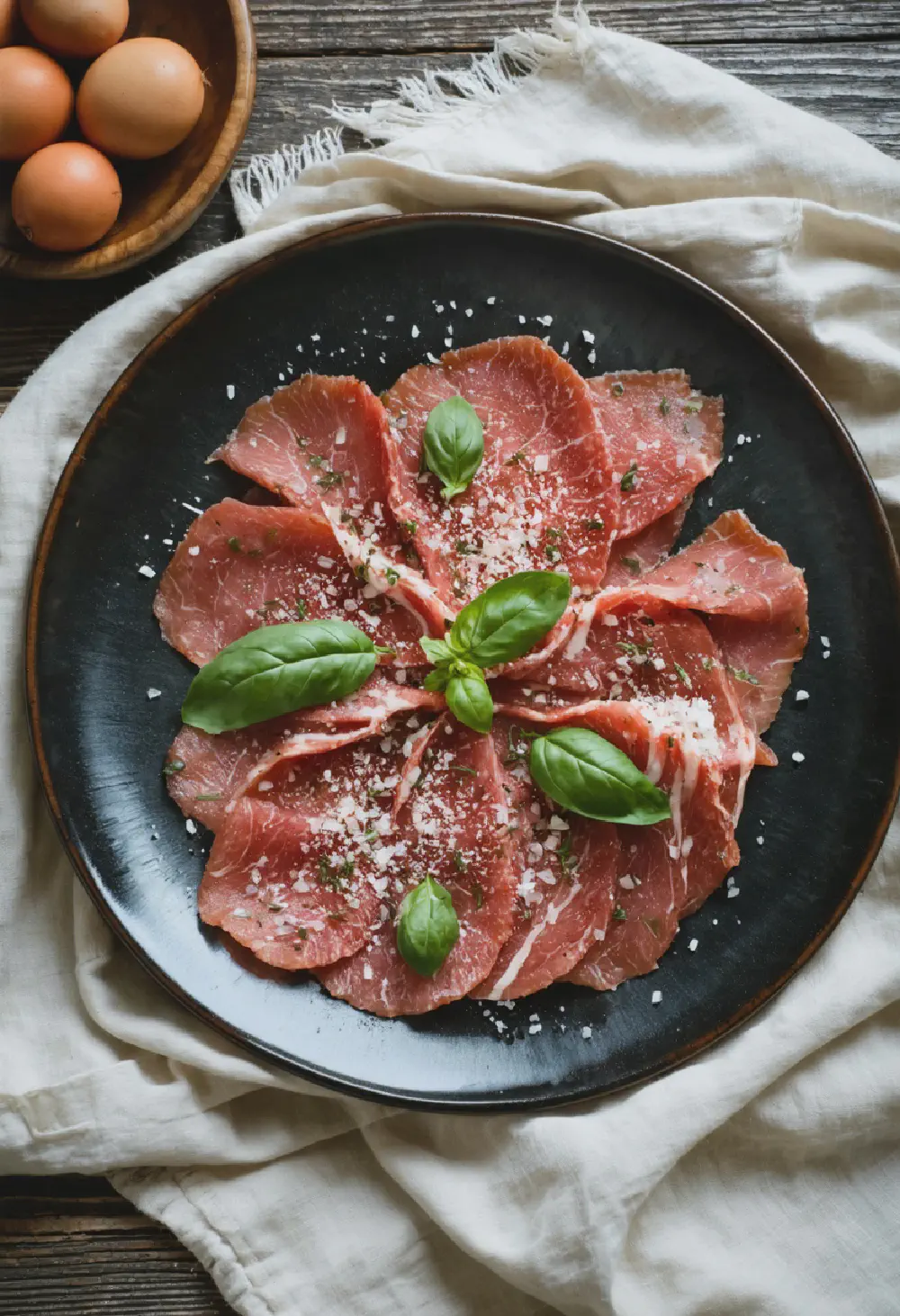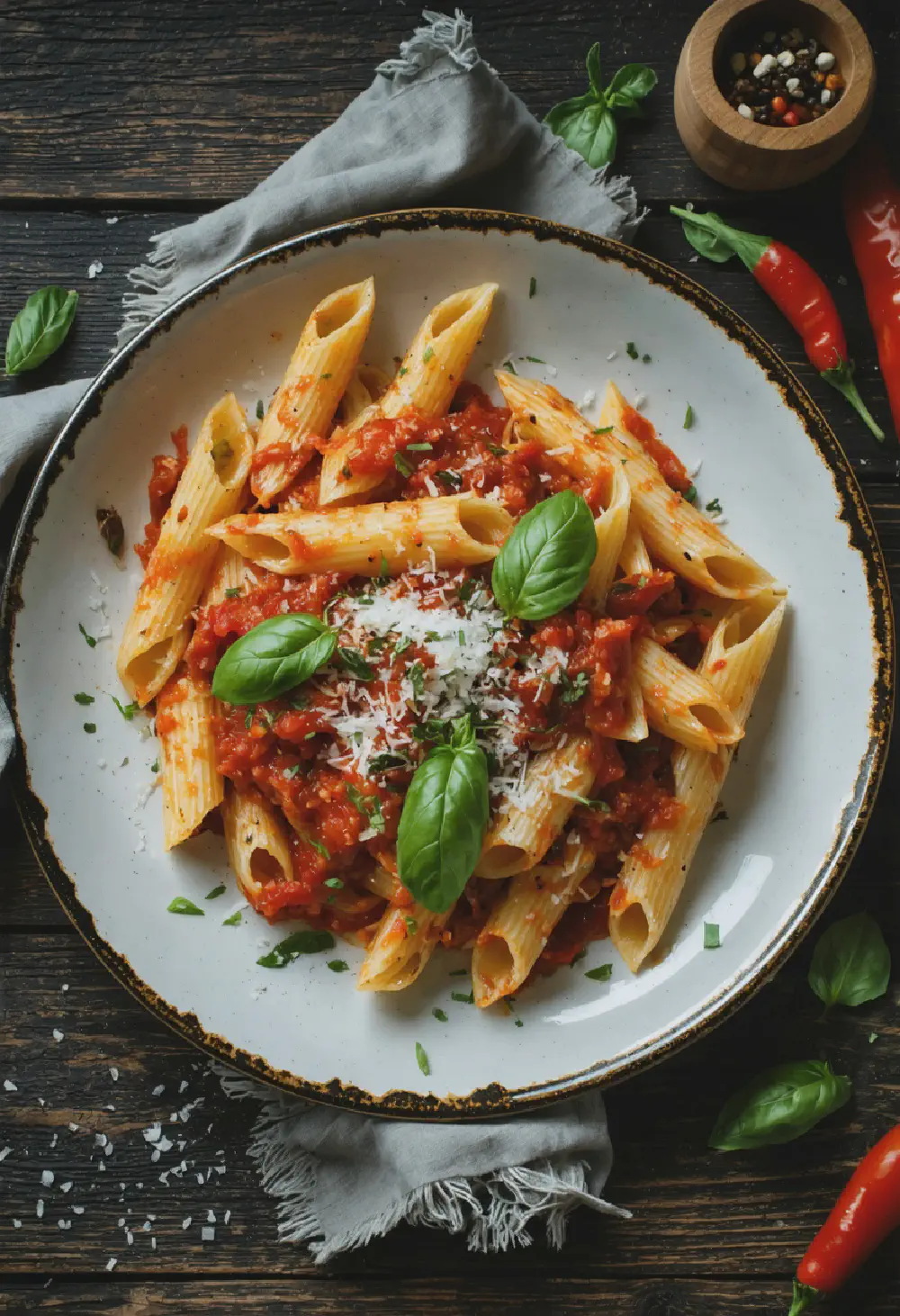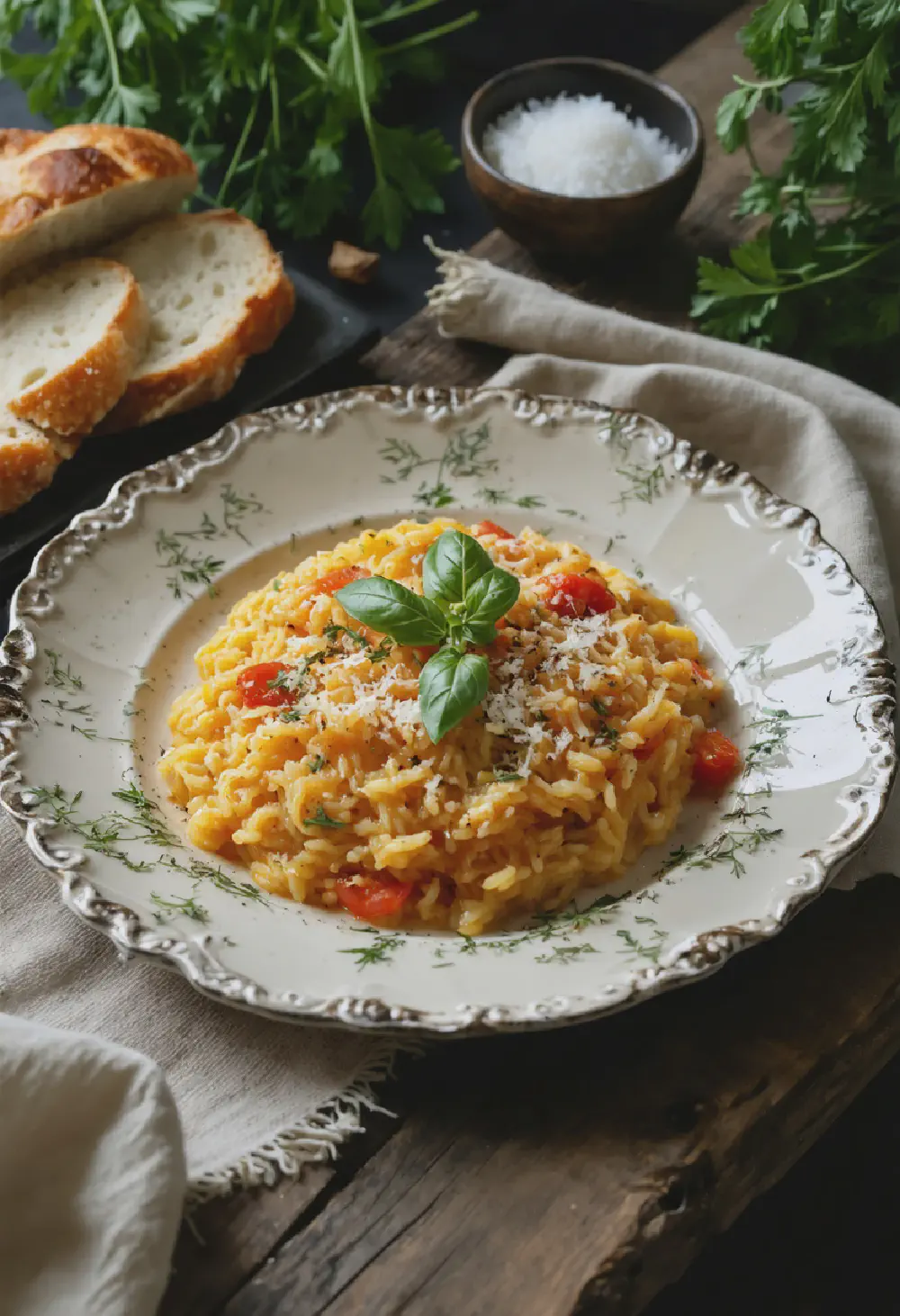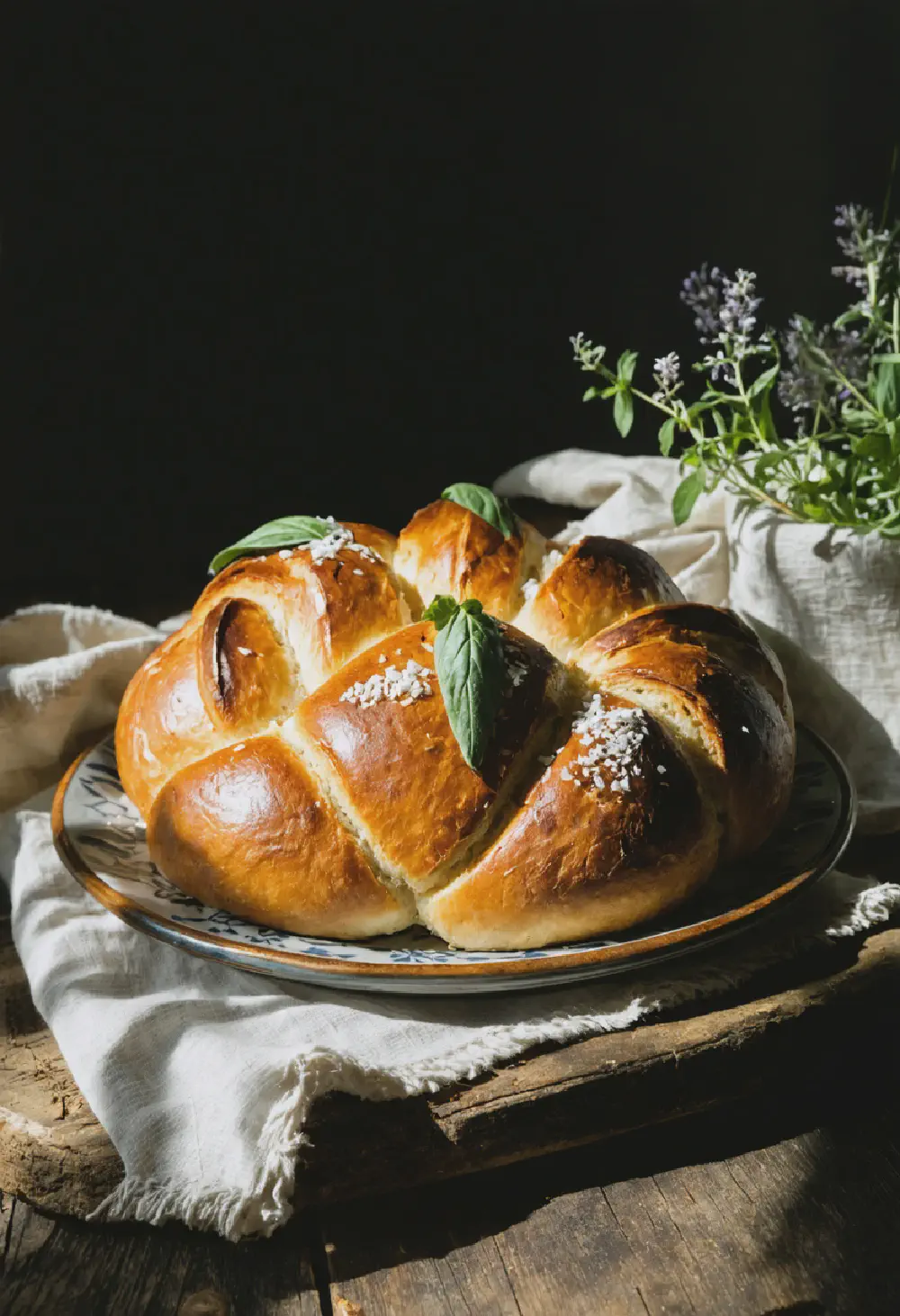Tagliatelle al Ragù
20M
2H and 50M
- Makes 4 servings
- 1 pound tagliatelle pasta
- 1 pound ground beef
- 1/2 pound ground pork
- 1 large onion, finely chopped
- 2 carrots, finely chopped
- 2 celery stalks, finely chopped
- 4 cloves garlic, minced
- 1 cup dry white wine
- 1 cup whole milk
- 1 can (28 ounces) crushed tomatoes
- 2 tablespoons tomato paste
- 2 tablespoons olive oil
- Salt and freshly ground black pepper to taste
- 1/2 cup grated Parmesan cheese, for serving
- Fresh basil leaves, for garnish
- Heat the olive oil in a large pot over medium heat. Add the onion, carrots, and celery, and cook until softened, about 10 minutes.
- Add the garlic and cook for another minute until fragrant.
- Increase the heat to medium-high and add the ground beef and pork. Cook, breaking up the meat with a wooden spoon, until browned and no longer pink, about 8 minutes.
- Pour in the white wine and let it simmer until it has mostly evaporated, about 5 minutes.
- Stir in the milk and let it simmer until it has mostly evaporated, about 10 minutes.
- Add the crushed tomatoes and tomato paste, and season with salt and pepper. Bring to a simmer, then reduce the heat to low.
- Let the sauce simmer gently, stirring occasionally, for at least 2 hours. The longer it cooks, the better the flavors will meld.
- When the sauce is nearly ready, bring a large pot of salted water to a boil. Cook the tagliatelle according to package instructions until al dente.
- Drain the pasta and toss it with the ragù sauce in the pot.
- Serve the tagliatelle al ragù hot, topped with grated Parmesan cheese and fresh basil leaves.
History of Tagliatelle al Ragù
Tagliatelle al Ragù, a beloved dish in Italian cuisine, has a rich history that dates back to the Renaissance period. Originating from the Emilia-Romagna region of Italy, this dish is said to have been created in the late 15th century. Legend has it that it was first made by a chef in honor of Lucrezia Borgia’s marriage to Alfonso I d’Este, the Duke of Ferrara. The chef was inspired by Lucrezia’s golden hair, and thus, the long, flat shape of tagliatelle was born to mimic her locks. Over the centuries, Tagliatelle al Ragù has evolved, but it remains a staple in Italian households, celebrated for its comforting and hearty nature.
Taste Profile of Tagliatelle al Ragù
The taste profile of Tagliatelle al Ragù is a harmonious blend of robust and delicate flavors. The dish features a rich meat sauce, known as ragù, which is typically made with a combination of ground beef and pork, slow-cooked with tomatoes, onions, carrots, and celery. This creates a deep, savory flavor with a hint of sweetness from the vegetables. The sauce is then paired with tagliatelle, a type of pasta that is wider than fettuccine but narrower than pappardelle, allowing it to perfectly capture the hearty sauce. The result is a comforting dish with a balanced taste that is both hearty and satisfying.
Cultural Significance of Tagliatelle al Ragù in Italian Cuisine
Tagliatelle al Ragù holds a special place in Italian cuisine, particularly in the Emilia-Romagna region where it originated. It is more than just a meal; it is a symbol of family, tradition, and comfort. In Italy, Sunday lunches are often centered around a dish like Tagliatelle al Ragù, where families gather to share a meal that has been lovingly prepared over several hours. The dish is also a testament to the Italian philosophy of using simple, high-quality ingredients to create something extraordinary. It embodies the essence of Italian cooking, where the focus is on enhancing the natural flavors of the ingredients rather than masking them. As such, Tagliatelle al Ragù is not just a dish but a cultural icon that represents the heart and soul of Italian culinary tradition.
